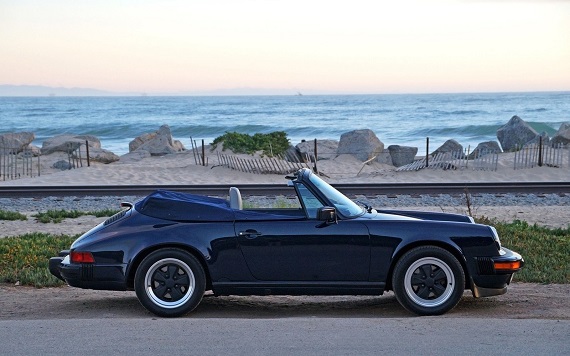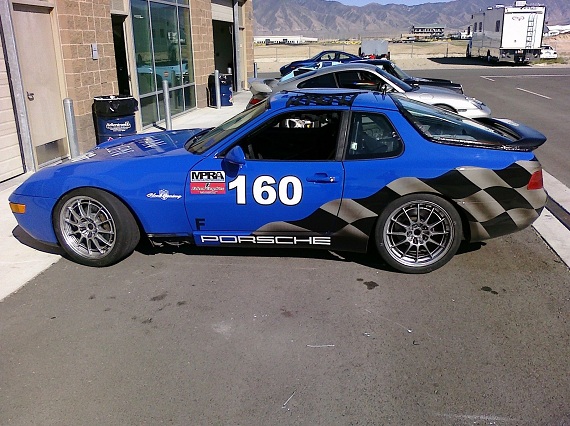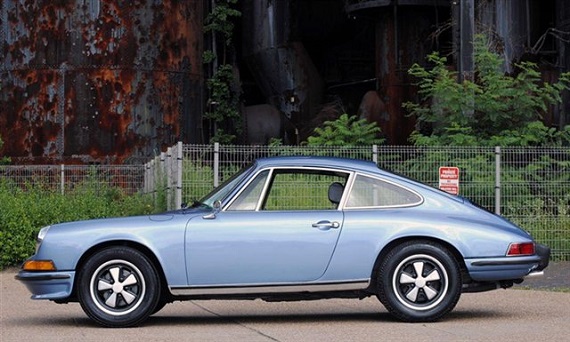I mentioned briefly in a previous post the transmission differences between the ’86 and ’87 model years for the 911 and we can see here how much sellers take pains to emphasize the presence of the G50 transmission. I always find it a humorous strategy. As I mentioned in that post, and as a few noted in the comments, the G50 is better, but not necessarily enough so that we should ignore the early years of these cars. With that said, we could probably make the case that the transmission should matter more to collectors rather than those looking for a driver as the G50 will likely show better value down the road. Which brings us to the car seen here: a Dark Blue 1987 Porsche 911 Carrera Cabriolet, located in California, with just shy of 50,000 miles on the clock. This Cabriolet appears to be in excellent shape all around, the mileage is pretty low, and it came with a few highly desirable options, all of which likely suggests interested parties will have an eye towards the future when considering this as a purchase.
Category: Porsche
Ever hear the story of George Washington’s famous axe that cut down the cherry tree? It’s something called Theseus’ Paradox, and it’s a question of whether an object remains original in the effort to preserve it. In the case of George Washington’s axe, both the head and handle had been replaced several times but it was still claimed to be “the axe” used by Washington. Occasionally we see such things with road cars, but much more often it appears with race cars, as is the case with today’s 968. These cars were intended to be raced, and they were – hard. Rubbing, bumps, bruises and crashes amongst race cars are fairly common – just look at the Formula One race from this past weekend – it seemed that nearly every corners one was banging into another. So, here was have a early 968 built for the Firehawk series, but then crashed heavily and re-tubbed. Is it still the same car?
CLICK FOR DETAILS: 1992 Porsche 968 Firehawk on eBay
Comments closed1974 brought with it one of the more significant, and unloved to many, design changes for the Porsche 911. Gone was the hood that stretched fully to the front of the car replaced by the rough protrusions of federally-mandated impact bumpers. Now, to be fair, these bumpers didn’t destroy the design and the 911 continued to be a very sharp looking car with few alterations to its appearance over the next 15 years. Still, something was lost and the pre-1974 cars possess an originality in their intention that other 911s struggle to match. The car featured here comes from the final year of the long-hood design, a really pretty Gemini Blue 1973 Porsche 911T Coupe, located in Pennsylvania. If the stated mileage can be verified, this would qualify as one of the lowest mileage pre-1974 911s I’ve come across.
CLICK FOR DETAILS: 1973 Porsche 911T Coupe on eBay
1 CommentTypically when we feature a 912 it’s because we hope to highlight its relative value compared to a similar vintage 911. These are, after all, basically a 911 design but with a flat-4 engine rather than the 911’s flat-6 and tend to come far cheaper. Well, what about the other end of the 912 spectrum: the pristine, collector-quality, 912? Like the 911, a really nice 912 can command a fairly high price, though still far short of a 911 of comparable quality. The example featured here is a Polo Red 1969 Porsche 912 Targa, located in Connecticut, with black interior. 1969 was the last year for the 912 (not counting it’s brief reappearance in 1976 as the 912E) and, like the 911, it featured a slightly longer wheelbase than in previous years. We don’t come across very many Targas from these years (whether 911 or 912) so it’s always nice to see where the design began. This particular car is the hard-window Targa and appears to be very low-mileage, though just how low is a little uncertain.
CLICK FOR DETAILS: 1969 Porsche 912 Targa on eBay
Comments closedWell, I hope this will stir some interest, as I think this is a bit of an interesting comparison. What level of performance can you buy for $10,000 (give or take) these days? Surprisingly, there are a lot of options – and those options vary pretty seriously in their execution and packages; there’s a wagon and a sports car, two sedan-based coupes and a hatchback. Engines range from a 2 liter turbo to a V8, with a bit of everything in between. Yet, what appears to be a very strange comparison linked only by price is revealed to be much closer when you look at performance figures:
E36 M3: 240 hp, 0-60 6.0 seconds, 3,200 lbs
944 Turbo: 220 hp, 0-60 5.9 seconds, 2,900 lbs
CLK500: 302 hp, 0-60 5.7 seconds, 3,800 lbs
S4 Avant: 250 hp, 0-60 5.6 seconds, 3,700 lbs
GTi: 200 hp, 0-60 6.6 seconds, 3,200 lbs
The range is much closer than you’d expect – especially when you consider that these figures could easily be equaled in margin of error, driver skill and reaction time. In the twisties, the lower powered cars like the GTi catch up to the higher power CLK and S4. All are, in one way or another, practical choices. Some are destined (or already) classics, while others will likely fade away. So what would be your choice? Let’s start with an M3 we’ve already seen:




